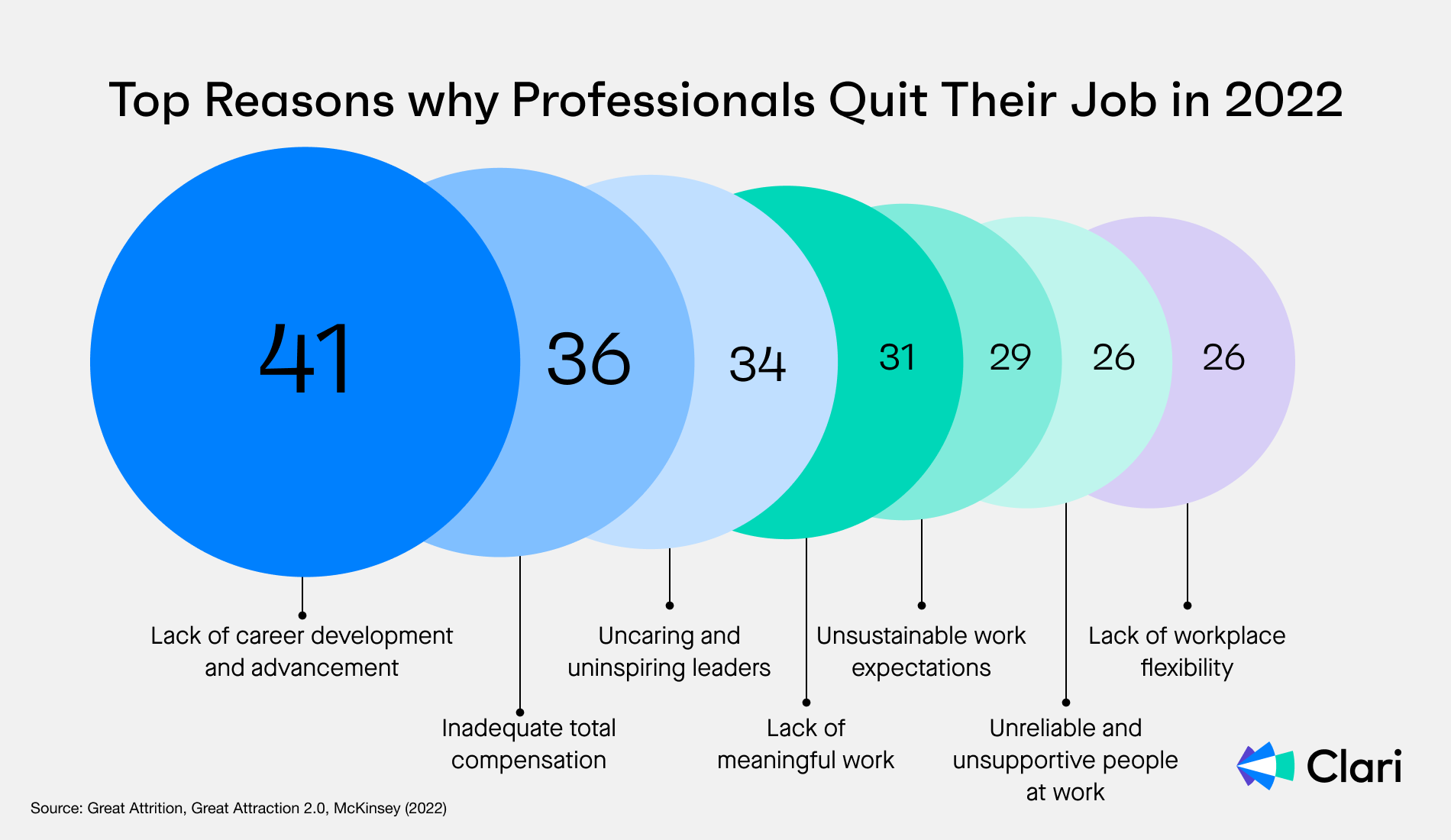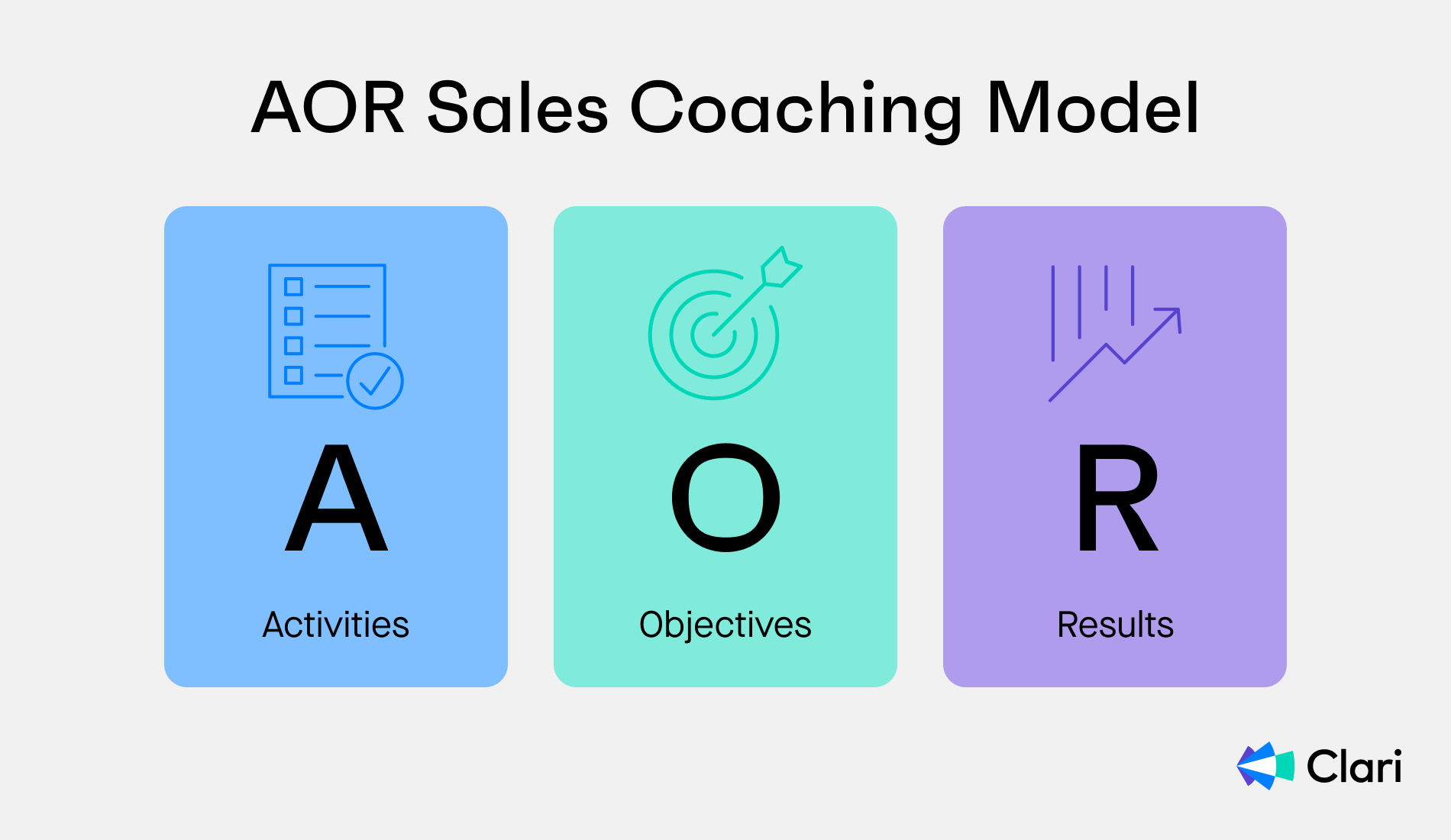Every sales manager wants their sales reps to perform at their best all the time. But most don’t lay the foundation required for this to be possible.
Many sales leaders go through the motions on weekly “coaching calls'' with their reps. But calling something sales coaching doesn’t make it practical for improving rep performance.
To achieve that, you must have the right sales coaching approach. You need to tailor it to your reps and company.
This guide explores sales coaching and its benefits, popular and effective techniques, highly effective sales coaching tips, and pitfalls to avoid.
Table of content:
- What is sales coaching?
- What are the benefits of sales coaching?
- What does coaching a sales team look like?
- What are the best sales coaching techniques?
- 6 effective tips for sales coaching
- 5 sales coaching mistakes to avoid at all costs
- How can you measure sales coaching effectiveness?
- What are some tools for sales coaching?
- Every tool you need for effective sales coaching in a single platform
What is sales coaching?
Sales coaching is ongoing training and support from sales managers to help reps perform at their best. It can take many forms, including coaching calls, sales team meetings, and tailored coaching programs.
Thanks to developments in sales analytics, it’s no longer a discipline based only on intuition and experience. Modern sales coaches use concrete performance data to analyze how reps are doing and tailor their interventions.
You can see exactly where reps go wrong in sales calls and give the perfect advice to help them.
What are the benefits of sales coaching?
The clear benefit of sales coaching is improving performance, but it also has benefits beyond that.
Helps your sales staff perform better
According to Salesforce’s State of Sales report, 81% of sales reps agree that sales coaching delivers value. And the top-performing reps are 45% more likely to receive one-on-one coaching on a weekly basis.
It makes sense. If sales coaching helps, a more routine, planned approach is likely to lead to better performance. The bottom line is that sales coaching helps your sales reps close more deals—as long as you do it right.
Keeps your sales staff for longer
According to McKinsey, the number one reason employees left a company in 2022 was a lack of career development opportunities.

Sales coaching doesn’t just help your staff perform better but also earn more and advance their careers. This can help significantly reduce turnover and help you keep your most motivated reps for longer.
Aligns reps with the latest techniques, sales goals, and tools
Coaching also represents an effective method for intervention if sales reps start going against their sales training.
It allows you to help align your reps with your most up-to-date sales plays and work towards meeting sales quotas.
What does coaching a sales team look like?
When coaching a sales team, you need specifically trained sales coaching staff or sales leaders with a talent for listening and training.
One aspect is holding team meetings and collectively working towards sales goals. But the main part is to work one-on-one with your reps to help them improve over time.
Here are some ways in which you can do this:
- Shadowing a rep’s meeting or phone call with a prospect
- Figuring out their strengths and what they struggle with
- Guiding them through how to tackle and close challenging deals
- Offering relevant sales tips or recommending a training program
- Helping your reps effectively leverage remote selling techniques and tools
You fill a similar role to a sports team coach in many ways. You should be a leader for the team, yes. But to make meaningful progress, you need strong relationships with each team member.
You need to listen to your reps’ goals and struggles and help them get there. That’s the most crucial role of a sales coach.
Without this, sales organizations can only succeed by hiring reps who have mastered their craft. And if you’ve ever done hiring in sales, you know how difficult (and expensive) it is to hire top talent.
What are the best sales coaching techniques?
Several sales coaching techniques exist, but not all are effective in 2024. Below, we’ve highlighted three different models that are still effective.
GROW
GROW is a sales coaching model focusing on the individual sales rep’s goals and needs. The GROW acronym stands for goals, reality, options, and will.
- Goals: Where do you want to be?
- Reality: Where are you now?
- Options: What are the roadmaps/options to achieve your goals?
- Will: What are you willing to do out of those options?
CLEAR
CLEAR is a sales coaching technique focusing on listening to each rep’s needs. In the final stage, you don’t review the rep’s performance but how the rep feels about the coach.
- Contract: Coach and rep outline how each session should go and the goals.
- Listen: Use active listening and catalytic questions to explore your reps’ needs and challenges.
- Explore: Help the rep understand how their current issues hinder them professionally.
- Action: Work together to outline logical action steps to help them overcome their challenges.
- Review: The rep reviews the coach’s performance.
AOR
AOR is more data-centric, focusing on activities, objectives, and results.

- Activities: Figure out which trackable sales activities are relevant to this sales rep. It could be the number of calls made, emails sent, or time spent on calls.
- Objectives: Develop rep-specific objectives based on the specific objectives. How much do you want to improve specific numbers? Come up with an action plan together.
- Results: Track sales activity metrics like calls, minutes on call, emails, response rates, and more. Also, track bottom-line metrics like deals closed and lost, win rates, and more.
Which model will work best for your team depends on your industry, clients, and sales methodology.
6 effective tips for sales coaching
Want to take your sales coaching to the next level? Follow the six tips from sales experts we share below.
1. Leverage 1-on-1 meetings in the right way
Meeting as a team can be helpful, but one-on-one sales meetings are the bread and butter of sales coaching.
But how often are they truly effective? As Grace Tyson, Sales Manager at Chorus.ai, shares: “As a manager, you don't want to be one of someone’s 90 different managers or mentors who haven't been impactful. You want to be one of the few that have a huge impact and transform your teams’ careers.”
To do that, you need one-on-one meetings and actual coaching. Prioritize and prepare for these meetings to ensure your reps get the most out of them.
In a recent webinar, Tyson, Alex Kremer, Sales Manager at Outreach, and Anthony Cessario, AVP of Sales at Clari, discussed the four building blocks of effective one-on-one sales meetings, which we’ll cover below.
2: Review the (right) data
The first part of a successful one-on-one is reviewing the right data. The conversation needs a foundation built on facts.
Review the sales performance data of each rep before you meet with them.
Cessario explains that his team leads with the forecast: “Our forecast is in real time. We have the real roll-up in front of our eyes,” he says. “So, I spend just a few minutes making sure I understand any changes in numbers with my team. Maybe 5-10 minutes, at most, making sure we're on the same page with how we're rolling up our forecast.”
Instead of spending time reviewing numbers and processes that can be automated, look at relevant deal data or, even better, look at it ahead of time so you can come to your one-on-one with a point of view instead of waiting for the meeting to inspect it.
3: Deep dive into deals
After reviewing the right data, it’s time to dive deeper into the deals in the sales cycle, particularly when coaching newer reps. “We do a rigorous, streamlined, consistent framework for diving deep into a deal,” Tyson shares. “And I highly recommend doing something consistently so that you can cut right to the heart of the matter rather than hearing the story or hearing the news.”
She continues, “We look at things like op creation, pipeline value, lost deals, the reasons why deals are lost, activity metrics. And then we also look at leading indicators of success, like talk-time ratio on calls, engaging questions.”
We’re partial to the 4-point deal inspection, which is a tried-and-true process for quickly seeing the health of a deal.
4: Drive deal strategy
Deal strategy should be a huge focus area for new and seasoned reps. This involves taking a step back and asking the right questions to look at the macro view or big picture, such as:

- Are we driving the revenue bands that are important to us?
- Are we creating a pipeline?
- How are we tracking against our longer-term deals?
The focus is not only on the next steps but also on the end goals and how to get there.
Tyson uses the AAA plan—answers, action, and attitude—to help drive deal-strategy discussions. “Answers: What answers do you need to get on this next call? Action: What action do you want the prospect to take coming out of the call? And Attitude: How do you want the prospect to feel coming out of that next call?”
5: Develop sales skills and coach
“Reps crave to be coached,” Kremer says. “They want to know how to close better. They want to know how to demo better. They want to learn how to ask better and stronger open-ended questions.”
But it’s critical not to overwhelm reps, he adds. “If you give them like 5 to 6 items that they need to work on, that they could improve, at the end of the day they're not going to do any of it. So be very prescriptive and specific in one thing to work on. Once they prove that they've mastered it, we can move on.”
Cessario shares that development is just as crucial for enterprise reps. “Twice quarterly we focus exclusively on development,” he says. “We'll get together in a one-on-one meeting, and we'll spend that entire one-on-one focused on developing for performance as well as career development.”
6: Adapt to your reps’ changing needs
As your reps progress, you need to also adapt to their growing skill set. At first, it may be enough to adjust your goals higher.
But over time, you also need to start:
- Assigning them a higher caliber of leads
- Sending them to leading industry conferences and expositions
- Giving them more control over their own growth opportunities
This is another perfect topic to bring up in any development-focused meetings.
5 sales coaching mistakes to avoid at all costs
As mentioned in the benefits section, sales coaching is only effective when done right. Just calling something a coaching call doesn’t make it effective.
Here are some common mistakes sales managers make when talking to their reps:
Reporting the news
Anthony Cessario from Clari has termed this the “Ron Burgundy effect, ”referring to the fictional TV anchorman played by Will Ferrell in the Anchorman movies. “Ron Burgundy's either being asked to show up to these one-on-ones or just showing up uninvited, and all he was really doing was reporting the news.” In other words, he comes in, sits down, and reads off his teleprompter.
In one-on-one sales meetings, Cessario says, “reporting the news” means a rep will show up with a list of deals and go through each one, line by line, giving the manager an update on every deal. It can be a painfully grueling process.
By the time the rep and the manager get through the list (if they can), the 30-minute call is over, and there is no time left for strategy or discussion of the next steps.
“You certainly don't want these one-on-ones to be like that,” Cessario continues. “Unfortunately, because of the lack of visibility most frontline sales leaders have, they're being forced to ask the rep to report the news. That gives you such a small window to actually focus on more strategic coaching.”
Further, without solid data to ensure accountability, you can end up with the entire one-on-one taken up by storytelling. Alex Kremer from Outreach says, “You ask a sales rep about a particular deal and where it's at, all of a sudden, you realize that they've been just telling a story for 5 minutes that's not necessarily relevant to the deal.”
Instead, employ some tips to use one-on-one time more productively.
Lack of manager accountability and follow-up
It’s not just reps who need to come prepared to one-on-one sales meetings. Managers also need to be accountable. Kremer recalls dreading his one-on-ones with a manager at a previous company because each week, his manager would simply ask him, “What’s up?” — having seemingly forgotten what their conversation was about the previous week.

“He’d forgotten what my action items were, and it was very apparent he was not taking this seriously. Why the heck should I be taking this seriously?” Kremer says.
Lack of value to the rep
In order to be effective, one-on-ones need to provide real value. Otherwise, you’re just “checking the box,” as Kremer puts it.
Even experienced reps want value from their one-on-ones, Tyson stresses. “When I was on that side of the table, I was extremely hungry for coaching and feedback every single week,” she says. “I was a top performer but that did not mean I was satisfied with hearing the response of ‘you're doing well; you're on track.’ I knew that I could go further. I wanted to learn more. I was really hungry for that sort of feedback.”
Auditor vs. coach
The fourth that many managers fall into for one-on-ones is taking on the role of an interrogator rather than a sales coach.
The more experienced the rep, the less time they want to spend discussing transactional details and weekly progress. According to Cessario, “They just want to call me and get coaching. So, for me, the major crack is that managers are coming to these meetings without a point of view.”
Not tracking the impact of your coaching program
The last mistake is not to track the impact of the coaching program. You might feel like you’re progressing, but are you sure this isn’t just the effect of experience?
To be sure, you need to measure performance metrics and compare them to benchmarks.
How can you measure sales coaching effectiveness?
To measure the effectiveness of your sales coaching, it’s best to use benchmarks from previous performance.
- Look at sales activity metrics before and after specific sales coaching.
- Use specific, relevant metrics. For example, following the number of calls makes sense if you’re dealing with the fear of cold calling.
- Track bottom-line metrics, not just sales activity metrics. Ultimately, you want to focus on reliable sales KPIs like quota attainment and deal win rate.

You could also do an A/B style experiment, but reps not getting coached would likely be resentful.
What are some tools for sales coaching?
Here’s a quick list of sales tools that can help you implement your sales coaching program more effectively:
- A sales analytics platform gives you a single source of truth on the bottom-line impact of your coaching efforts.
- A sales engagement platform can help you measure engagement metrics and highlight issues with rep performance.
- Conversational intelligence tools can help you dive deep into how reps handle themselves on calls. (It can even highlight opportunities for improvement.)
Every tool you need for effective sales coaching in a single platform
With Clari, you can access everything you need to take your sales reps to the next level.
Our platform includes revenue analytics, a robust sales engagement platform (Groove), and conversational intelligence.
Want to see the competitive advantage our platform can give your sales team? Sign up for a demo today.


